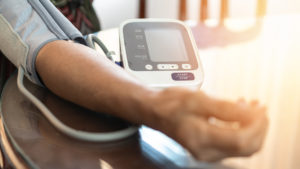 Having a healthy blood pressure means a lot of things. Most importantly, it means your heart doesn’t have to work too hard to keep you alive. But how are you supposed to know what your blood pressure is and how it works?
Having a healthy blood pressure means a lot of things. Most importantly, it means your heart doesn’t have to work too hard to keep you alive. But how are you supposed to know what your blood pressure is and how it works?
Without a measurement, you really have no idea what a healthy blood pressure feels like. For all you know, you’re sitting still reading this, and your blood pressure is high. You’d have no way of knowing. Further, your heart’s capacity can decrease with age.
Advertisement
A healthy blood pressure, regardless of age, is 120 millimeters of mercury (mmHg) over 80 mmHg. It is written 120/80 mmHg.
The top number represents systolic blood pressure, the pressure when your heart pushes blood out.
The bottom number is the diastolic pressure. It represents the pressure between beats.
The “pressure” refers to the blood pressing against your arterial walls.
Having a healthy pressure means your heart doesn’t have to work very hard to move blood throughout your veins and arteries. The vessels are relaxed and unobstructed, and all of your organs and tissues have continued access to nutrient-rich, oxygenated blood.
There are a bunch of ways you can reach a healthy blood pressure, or at least improve where you might be right now. Exercise helps shuttle blood through your system and keep veins and arteries relaxed long after a workout.
Diet also plays a role. Eating foods that are high in antioxidants can help limit inflammation along arterial walls and potentially work to remove LDL cholesterol plaque that might have accumulated.
Eating food that helps your body produce nitric oxide (NO) can also help. Nitric oxide helps relax veins to encourage better blood flow. Beetroot juice, in particular, has shown it can help blood flow by boosting NO.
Advertisement
Foods that boost “good” HDL cholesterol also help to lower blood pressure. HDL cholesterol acts as a clean-up crew for your arteries, helping to remove LDL deposits that make it harder for blood to move through.
If you’re maintaining a healthy weight, getting at least 30 minutes of exercise per day, and eating a well-balanced diet rich in fruit, vegetables, nuts, and unprocessed meat all while limiting the intake of processed foods and high-sugar items, your blood pressure is likely in a healthy range.
The only way to know for sure, however, is to monitor it regularly.
